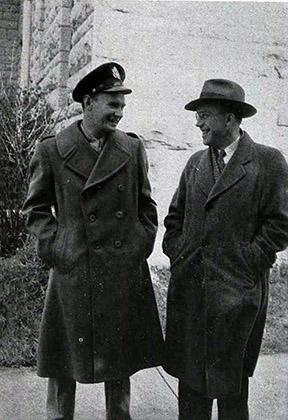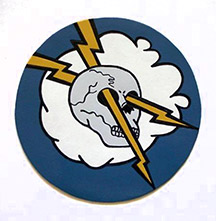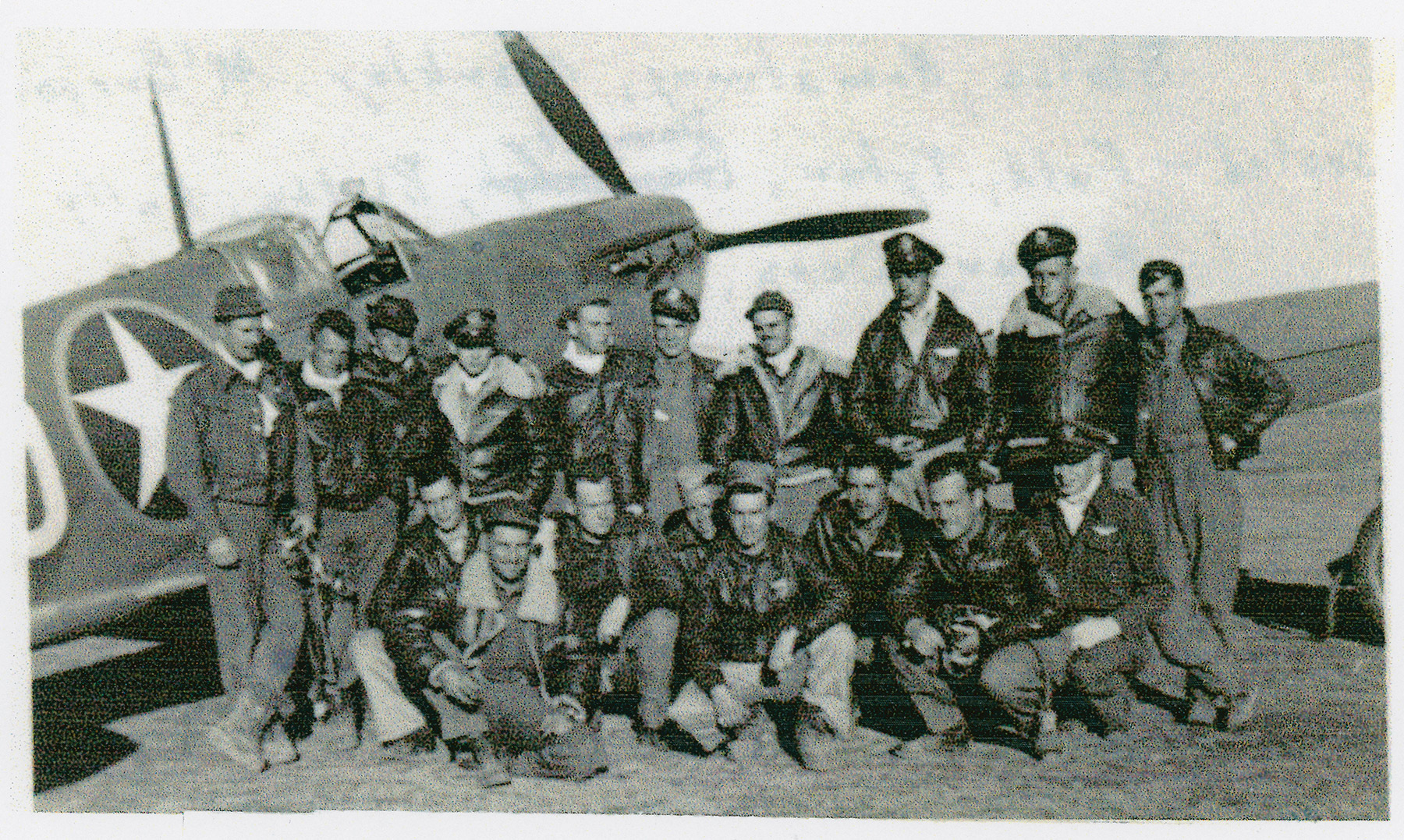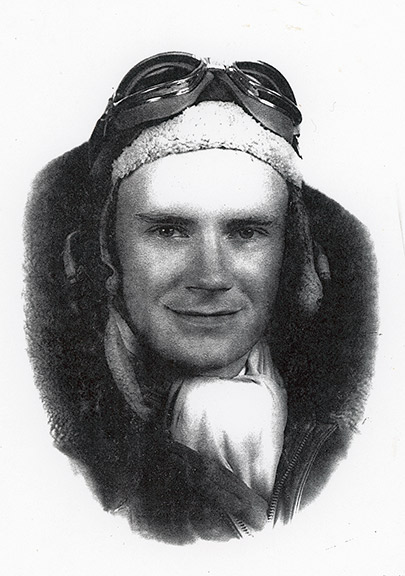James Dougherty
James “Jimmy” Dougherty was remembered by his friends as a “big, easy-going guy.” Jimmy first came to Manhattan with his family in 1941 when he enrolled in Kansas State’s pilot training program. He learned to fly at Manhattan’s own local airport.
Jimmy joined the military when the war broke out and was awarded his pilot’s wings as a Second Lieutenant in the Army Air Corps in February 1942. Because he graduated from flight school so early on in the war, Jimmy became one of the first American pilots to see action against the Axis in the west. Lieutenant Dougherty was assigned to the 4th Squadron of the 52nd Fighter Group which was sent to England and became one of the only American fighter units assigned to fly the famed British Spitfire fighter plane.
Jimmy and the rest of his squadron saw action for the first time in November 1942 during Operation Torch, the invasion of North Africa. From bases in Tunisia, Algeria, Libya, and later Sicily, Jimmy and his comrades provided air cover to Allied ground forces and battled German and Italian fighters in the sky above. Over the course of his service Jimmy flew on 115 missions and experienced combat approximately 58 times. He is known to have survived at least two crashes during his service, including one instance in which he was shot down by an enemy aircraft in Tunisia and awarded the Purple Heart for his injuries. The 52nd Fighter Group ultimately claimed the most air-to-air victories of any fighter group in the North African campaign, and the 4th Squadron, Jimmy’s unit, was the most successful squadron in the group.

Eisenhower. Featured in the 1944 Royal Purple.
After a year of combat service Jimmy eventually contracted a bad case of malaria while serving in Sicily in November 1943. He was sent home to recover at Irwin Army Hospital at Fort Riley. When he returned to service Jimmy was assigned to a new state-side posting at Rapid City Air Base in Rapid City, South Dakota.
Proving that no wartime service, even back home, was without its risks, Jimmy tragically lost his life on March 27, 1945. While returning from a flight to Pueblo Army Air Field in Colorado Jimmy faced some severe weather. Flying into intense headwinds in the middle of a snow storm, Jimmy exhausted the fuel supply in his Bell P 63 aircraft. He attempted a crash landing about 40 miles from the runway at Rapid City and was killed in the impact.


